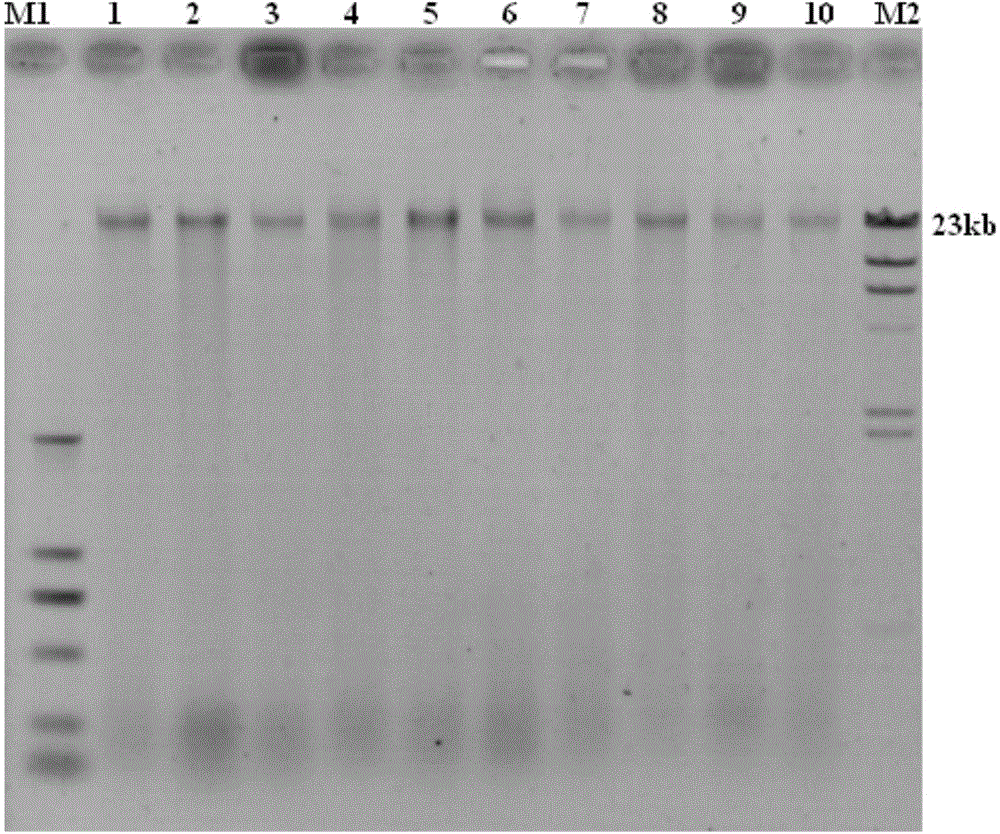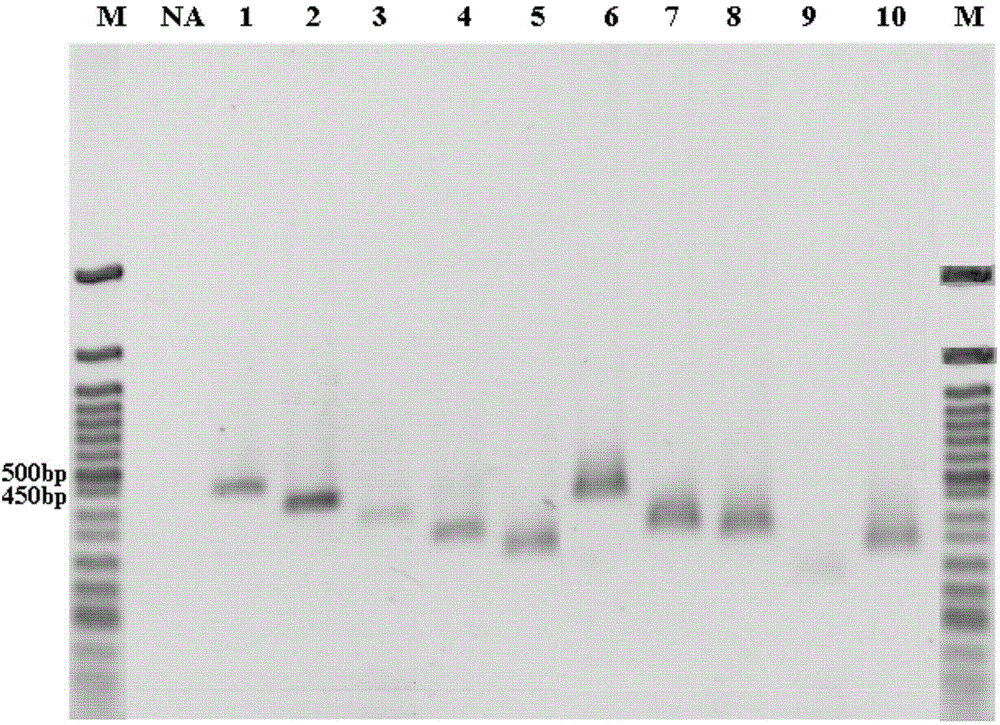Saliva preservation solution, preparation method and uses thereof
A technology for preserving fluid and saliva, applied in the field of molecular biology, can solve the problems of easy fracture, cell rupture, bacterial growth and other microorganisms, and achieve the effect of good integrity and reduced adhesion
- Summary
- Abstract
- Description
- Claims
- Application Information
AI Technical Summary
Problems solved by technology
Method used
Image
Examples
Embodiment 1
[0034] The saliva preservation liquid of the present embodiment comprises following components and content: lithium chloride 0.67mol / L, Tris-HCl33mmol / L, urea 0.67mol / L, SDS0.6% (w / v), EDTA3.3mmol / L, Ethanol 30% (v / v), the system pH is 7.5.
[0035] The preparation method of the saliva preservation solution of the present embodiment is as follows:
[0036] (1) Weigh 6.036g of urea and 4.26g of LiCl, respectively, and pour them into beakers in turn (clean the beakers with pure water). Note that the weighing process should be completed in a short time as much as possible to prevent deliquescence of the samples.
[0037] (2) Measure 4.95mL Tris-HCl (1M), 9mL SDS (10%), 0.99mL LEDTA (0.5M) and 45mL ethanol respectively, pour them into a beaker in turn, stir and dissolve with a clean glass rod, and set Make up to 150mL.
[0038] (3) Filter the above preservation solution with a disposable filter membrane device, and store it in a storage bottle.
[0039] (4) Adjust the pH value ...
Embodiment 2
[0060] This embodiment studies the situation of performing PCR amplification of 10 pairs of housekeeping genes from the extracted genomic DNA, using the samples from individual 1 and individual 2 stored in saliva samples for 1 week, 2 weeks, 3 weeks, 4 weeks and After 2.5 months, the DNA extracted was used as a PCR amplification template for experiments.
[0061] The 10 pairs of housekeeping gene amplification primers used in the experiment are listed as follows:
[0062] Table 1
[0063]
[0064] The PCR reaction system is as follows:
[0065]
[0066]
[0067] The PCR reaction procedure is as follows:
[0068] 95°C for 4min; 95°C for 40s, 58°C for 30s, 72°C for 50s, 34 cycles; 72°C for 10min; 16°C∝.
[0069] figure 2 It is the agarose gel electrophoresis image obtained by PCR amplification of the saliva sample of individual 1 using the genomic DNA extracted after 2.5 months of storage in the saliva preservation solution of Example 1 as a template, and the above...
Embodiment 3
[0071] In this embodiment, low-concentration and high-concentration preservation solutions were prepared with reference to the preparation method of Example 1, and the saliva preservation solution in Example 1 was used as the medium-concentration preservation solution, and these three groups of preservation solutions were used to preserve two individuals (individual 1 and After 1 week, 2 weeks, 3 weeks, and 4 weeks, DNA was extracted from the saliva samples of individual 2), and then interrupted, random high-throughput sequencing, and comparison were performed to study the contamination of microorganisms such as exogenous bacteria.
[0072] In the present embodiment, the low-concentration storage solution includes the following components and contents: lithium chloride 0.1mol / L, Tris-HCl1mmol / L, urea 0.1mol / L, SDS0.1% (w / v), EDTA1mmol / L, Ethanol 10% (v / v), the system pH is 7.0. The high-concentration preservation solution includes the following components and contents: lithium...
PUM
 Login to View More
Login to View More Abstract
Description
Claims
Application Information
 Login to View More
Login to View More - R&D
- Intellectual Property
- Life Sciences
- Materials
- Tech Scout
- Unparalleled Data Quality
- Higher Quality Content
- 60% Fewer Hallucinations
Browse by: Latest US Patents, China's latest patents, Technical Efficacy Thesaurus, Application Domain, Technology Topic, Popular Technical Reports.
© 2025 PatSnap. All rights reserved.Legal|Privacy policy|Modern Slavery Act Transparency Statement|Sitemap|About US| Contact US: help@patsnap.com



